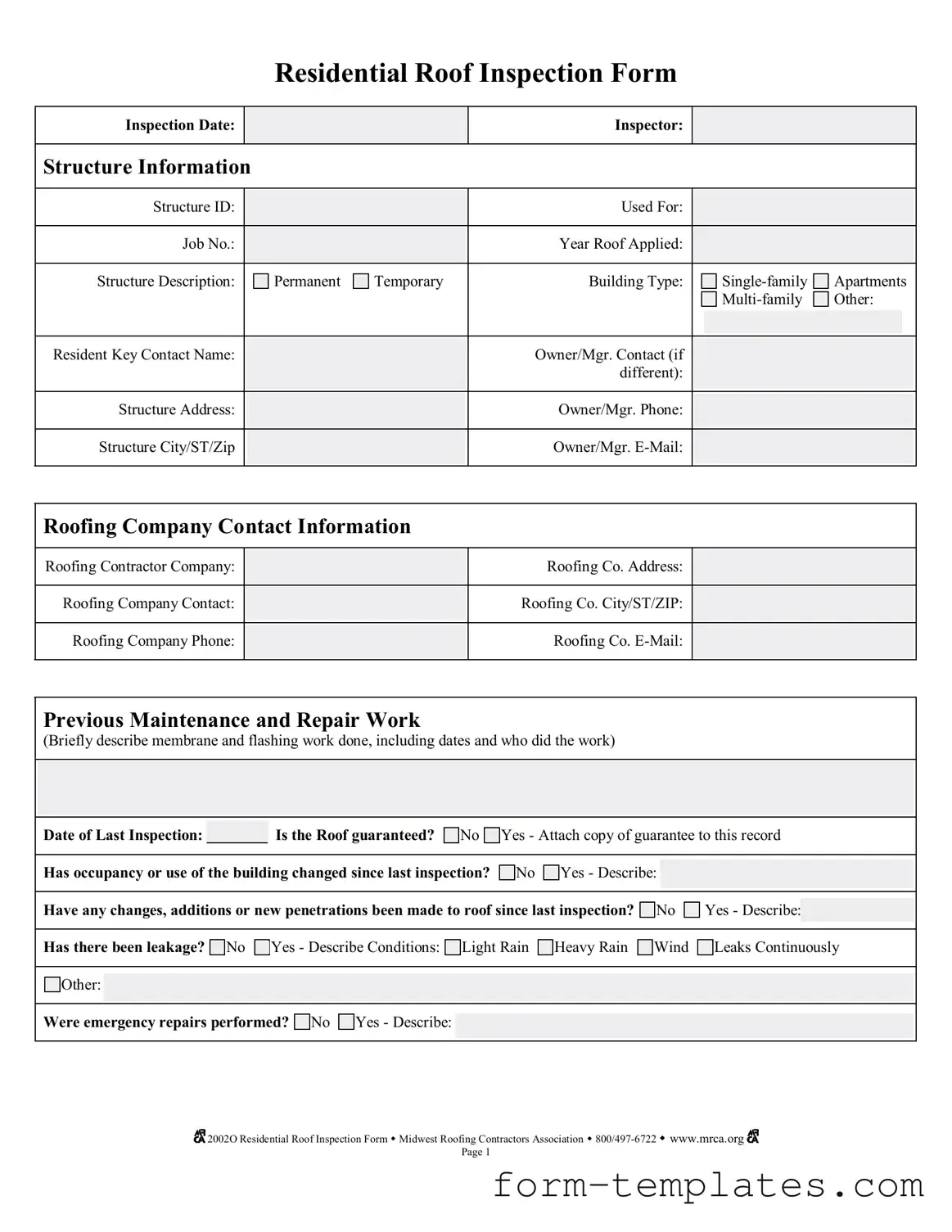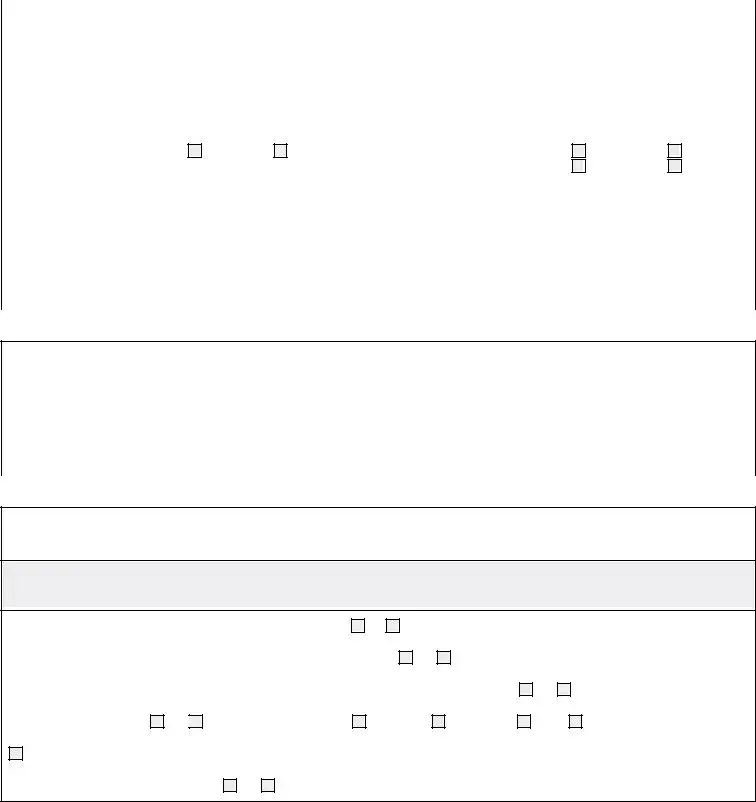The Roof Inspection form requires several key pieces of information. First, it includes the inspection date and the name of the inspector. Next, details about the structure are needed, such as the structure ID, its intended use, and the job number. You should also specify whether the building is permanent or temporary and indicate the type of building, such as single-family or multi-family. Additionally, contact information for the owner or manager, including their name, phone number, and email, is essential. Lastly, roofing company details must be provided, including the company name, address, contact person, and their contact information.
What should be included in the section about previous maintenance and repairs?
This section should briefly describe any maintenance or repair work done on the roof. Include information such as the type of work performed on the membrane and flashing, the dates when this work was completed, and who carried out the repairs. This history helps track the roof's condition over time and can assist in identifying recurring issues.
How do I assess the condition of different roof components?
The Roof Inspection form provides a coding system for assessing the condition of various components. You will use three codes: G for Good, F for Fair, and P for Poor. For each location on the roof, you should evaluate its condition and mark the appropriate code. For example, if the interior roof deck shows signs of corrosion, you would mark it as P for Poor. This systematic approach allows for easy tracking of issues and necessary actions.
What should I do if I find issues during the inspection?
If issues are identified during the inspection, you should take immediate action if the condition is marked as Poor. This may involve contacting a roofing contractor for repairs. If the condition is Fair, it is advisable to monitor the situation periodically. Document all findings and any actions taken in the form. Keeping a detailed record will help in future inspections and maintenance planning.


 2002O Residential Roof Inspection Form w Midwest Roofing Contractors Association w
2002O Residential Roof Inspection Form w Midwest Roofing Contractors Association w 

 2002O Residential Roof Inspection Form w Midwest Roofing Contractors Association w
2002O Residential Roof Inspection Form w Midwest Roofing Contractors Association w 

 2002O Residential Roof Inspection Form w Midwest Roofing Contractors Association w
2002O Residential Roof Inspection Form w Midwest Roofing Contractors Association w 

 2002O Residential Roof Inspection Form w Midwest Roofing Contractors Association w
2002O Residential Roof Inspection Form w Midwest Roofing Contractors Association w 

 2002O Residential Roof Inspection Form w Midwest Roofing Contractors Association w
2002O Residential Roof Inspection Form w Midwest Roofing Contractors Association w 